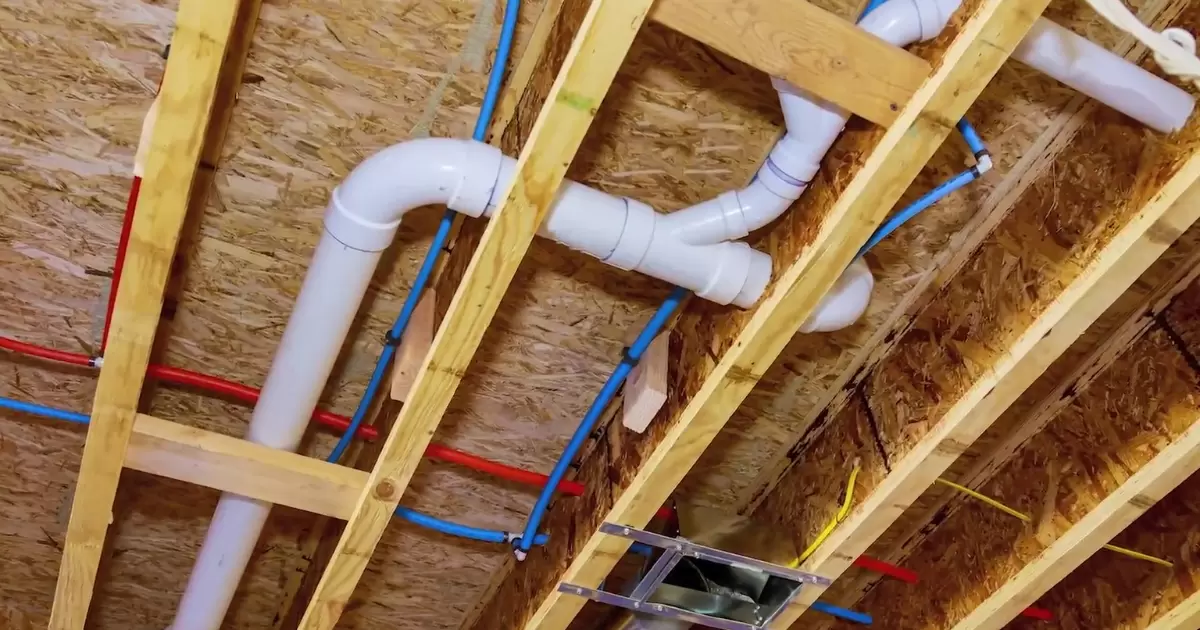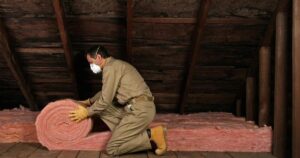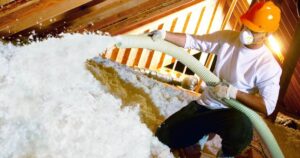Insulating PEX (cross-linked polyethylene) pipes is a crucial step to protect them from freezing temperatures, maintain water temperature, and prevent heat loss. PEX pipes are commonly used for plumbing and radiant floor heating systems. Insulation helps to conserve energy and safeguard the pipes from extreme weather conditions.
In this article we will explore Insulating PEX pipes is essential to prevent freezing in cold weather. Consider using foam pipe insulation, which is easy to install and provides excellent protection against temperature drops.
Ensure proper sealing of the insulation to avoid any gaps that might leave the pipes exposed. Use heat tape or cables for additional protection in extremely low temperatures. Regularly check the insulation for any signs of damage or wear and tear, ensuring it remains intact for optimal pipe protection.
How To Insulate Pex Pipe?
Understanding the process of insulating Attic PEX pipes is crucial for effective implementation. Start by identifying areas where the pipes are most vulnerable to cold temperatures. Use appropriate insulation materials and techniques, such as foam, heat tape, or cable wraps, depending on the specific conditions and environment.
Properly insulating PEX pipes involves wrapping the pipes evenly, ensuring complete coverage, and sealing any open ends or joints to maintain the insulation’s effectiveness.
What Is A Pex Pipe?
PEX (cross-linked polyethylene) pipe is a type of flexible plastic tubing used in plumbing systems for both hot and cold water. It’s known for its durability, resistance to corrosion, and flexibility, allowing for easier installation compared to traditional piping materials. This versatile piping material is commonly used in residential and commercial applications due to its ability to handle high temperatures and pressures, making it a popular choice for various plumbing needs.
PEX pipes come in different colors, allowing for easy identification of hot and cold water lines. They are cost-effective and have a longer lifespan, adding to their appeal for plumbing installations.
History of Pex Piping
PEX piping was first developed in the 1960s and introduced for residential use in the 1980s, revolutionizing the plumbing industry with its flexibility and durability. Initially used in radiant floor heating systems, PEX gained popularity due to its resistance to chemical and corrosion issues that affected other piping materials.
Over time, PEX evolved to encompass various types and improvements, becoming a widely accepted and preferred choice for plumbing systems.
Different Pex Types
There are three main types of PEX pipesPEX-A, PEX-B, and PEX-C, each manufactured using slightly different processes, resulting in variations in flexibility, strength, and cost. PEX-A, produced using the Engel method, offers the highest flexibility and durability due to its molecular structure, making it more resistant to freezing and bursting.
PEX-B, created through the Silane method, is slightly less flexible but remains a popular and cost-effective choice. PEX-C falls between A and B in terms of both flexibility and cost.
How to Determine if You Need to Insulate Your PEX Pipes
Assessing the need for insulating PEX pipes involves considering factors such as the climate in your area and the location of the pipes. If your PEX pipes are located in areas prone to freezing temperatures, especially in unheated or exterior spaces, it’s crucial to insulate them.
Understanding the environmental conditions and vulnerability of your piping system to temperature fluctuations helps determine whether insulation is necessary for preventing potential damage.
Proper Way to Insulate A Pex Pipe At Home
To properly insulate PEX pipes at home, start by selecting the appropriate insulation material and ensuring the pipes are clean and dry before installation. Wrap the pipes evenly with the insulation material, making sure there are no gaps or openings that could expose the pipes to the cold.
Secure the insulation with tape or straps and regularly inspect the installation to maintain its integrity and effectiveness.
Where do your PEX pipes run?
Knowing the path of your PEX pipes is essential for determining the areas where they might be susceptible to cold temperatures and require insulation. Consider areas such as exterior walls, unheated spaces, and regions with minimal insulation, as these are common places where PEX pipes might be exposed to freezing temperatures. Insulating these vulnerable sections can prevent potential pipe damage due to freezing conditions.
If your PEX pipes are exposed outside
PEX pipes exposed to outdoor elements are at higher risk of freezing during cold weather. Properly insulate these pipes to shield them from low temperatures and potential damage.
Consider using thicker insulation or heat tape specifically designed for outdoor use to provide enhanced protection against extreme weather conditions.
Regularly monitor the insulation and perform maintenance to ensure its continued effectiveness in safeguarding the PEX pipes.
Consider opening an interior faucet
Allowing a small stream of water to flow from an interior faucet can prevent freezing in PEX pipes during extremely cold weather by keeping the water in motion. This simple trick maintains water movement, reducing the likelihood of freezing and subsequent pipe damage.
Ensure the flow is gentle enough to prevent water wastage while providing enough movement to prevent freezing.
Plumbing winterization for vacation homes, basements, and crawl spaces
Vacation homes, basements, and crawl spaces often have PEX pipes exposed to low temperatures and are more prone to freezing. Properly insulate these areas to prevent potential pipe damage. Consider draining water from pipes in areas that won’t be used for extended periods, such as vacation homes, to avoid freezing and subsequent damage. Implementing insulation and other winterization techniques is crucial for protecting PEX pipes in these less frequently accessed areas.
Cell pipe insulation in the attic
Attics can have PEX pipes running through them, making them susceptible to freezing during cold weather. Insulating these pipes in the attic is essential for protection.
Use appropriate insulation techniques to cover the pipes effectively, preventing them from being exposed to extreme temperatures in the attic space.
Regularly check and maintain the insulation in the attic to ensure the pipes remain protected from freezing conditions.
Things to Consider Before Insulating Pex Pipes
Before insulating PEX pipes, consider the climate of your area and the vulnerability of the pipes to freezing. Evaluate the type of PEX pipes you have installed and the specific insulation needs based on their location and environmental exposure.
Consulting a professional or researching thoroughly can provide insight into the best insulation methods and materials for your specific PEX piping system.
Final Thoughts
Properly insulating PEX pipes is vital to prevent potential damage from freezing temperatures, ensuring the longevity and functionality of your plumbing system. Regular maintenance, inspection, and necessary repairs or upgrades to the insulation are crucial to maintaining the effectiveness of the protective measures.
Understanding the factors contributing to the need for insulation and employing the right techniques help in safeguarding PEX pipes and maintaining a reliable plumbing system.










